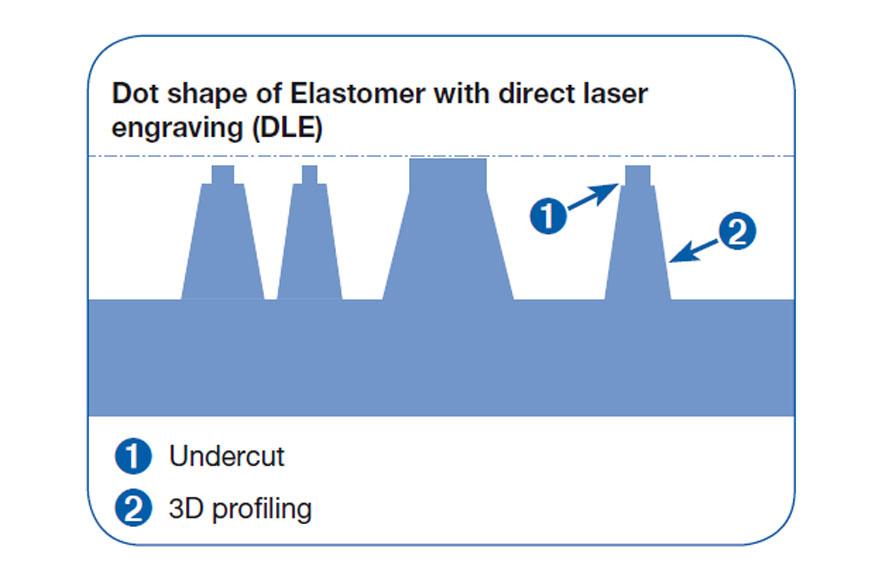Flexography
High-quality, flexible, economical - modern flexography
Flexibility has always been the strength and hallmark of flexographic printing. It is the only process that enables the printer to print the entire range of substrates used in the packaging industry today. Thanks largely to dynamic developments in press and printing form technology in recent years, packaging produced by flexographic printing now rivals those of offset and gravure printers in every way. Consequently, combinations of flexo and gravure or flexo and offset printing systems are increasingly common in modern printing plants.
A clear trend towards the use of laser-engraved elastomer sleeves for printing forms has been evident for some time. This trend is a result of continuing advances in highresolution laser engraving technology on the one hand, and accompanying developments in the field of elastomer sleeve material science on the other.
Today, laser engraving is capable of reproducing ultra-fine dots and screens of up to 80L/cm. Improvements in all components involved in the printing process and the advantages offered by elastomer continuous printing forms ensure flexographic printing a steadily increasing share of the market and guarantee a strong position in packaging production in the future.
Products for Flexography 483 KB
Direct laser engraving of flexographic printing forms
Direct laser engraving is gaining a stronger and stronger position as an accepted alternative to photopolymerisation in the production of flexographic printing forms. In direct laser engraving, is modelled through ablation with a high-energy laser beam into a raised image. This process requires a high-powered laser, as – in contrast to the very thin layer on a digital photopolymer form, which is only a few microns thick – it is necessary to remove material to a depth of several tenths of a millimeter. Technological advances now make it possible to exploit the fundamental advantages of direct laser engraving even more efficiently.

The high-energy laser beam is capable not only of leaving the material in place or re moving it entirely, it can also release its energy in controlled doses according to the image data and thus produce screen dots with flanks of a defined form and gradient. This is a signifi cant benefit for flexographic printing as a relief printing process, as, be sides the precision and design of the dot surface, the mechanical stability of the dots has a decisive impact on the quality of the printed product. This three-dimensional property of dot formation in laser engraving reinforces even the fi nest dots, affording more image contrast and printing form longevity. In addition, laser engraving offers a series of other benefits. Laser energy can be precision-controlled to marginally engrave the elastomer surface lightly where fine tonal gradations are required.
Thus a small dot may stand less high than, say, a solid area adjacent to it. In this way, solids with high ink transfer can be combined with fine screen work in one printing form. This “electronic undercutting” can be used to significantly enhance the quality of the printed image. The use of direct laser engraved sleeves on modern flexographic presses requires no additional investments or machine modifications. The same inks and screen rollers are used as when working with photopolymer plates and sleeves. Thanks to advances in laser technology and the transition from analog to digital workflows, direct laser engraving has established itself as a technology bringing real and decisive impulses to flexographic printing in terms of economy and quality enhancement.

 Deutsch
Deutsch
 Český
Český
 Español
Español
 Polski
Polski

